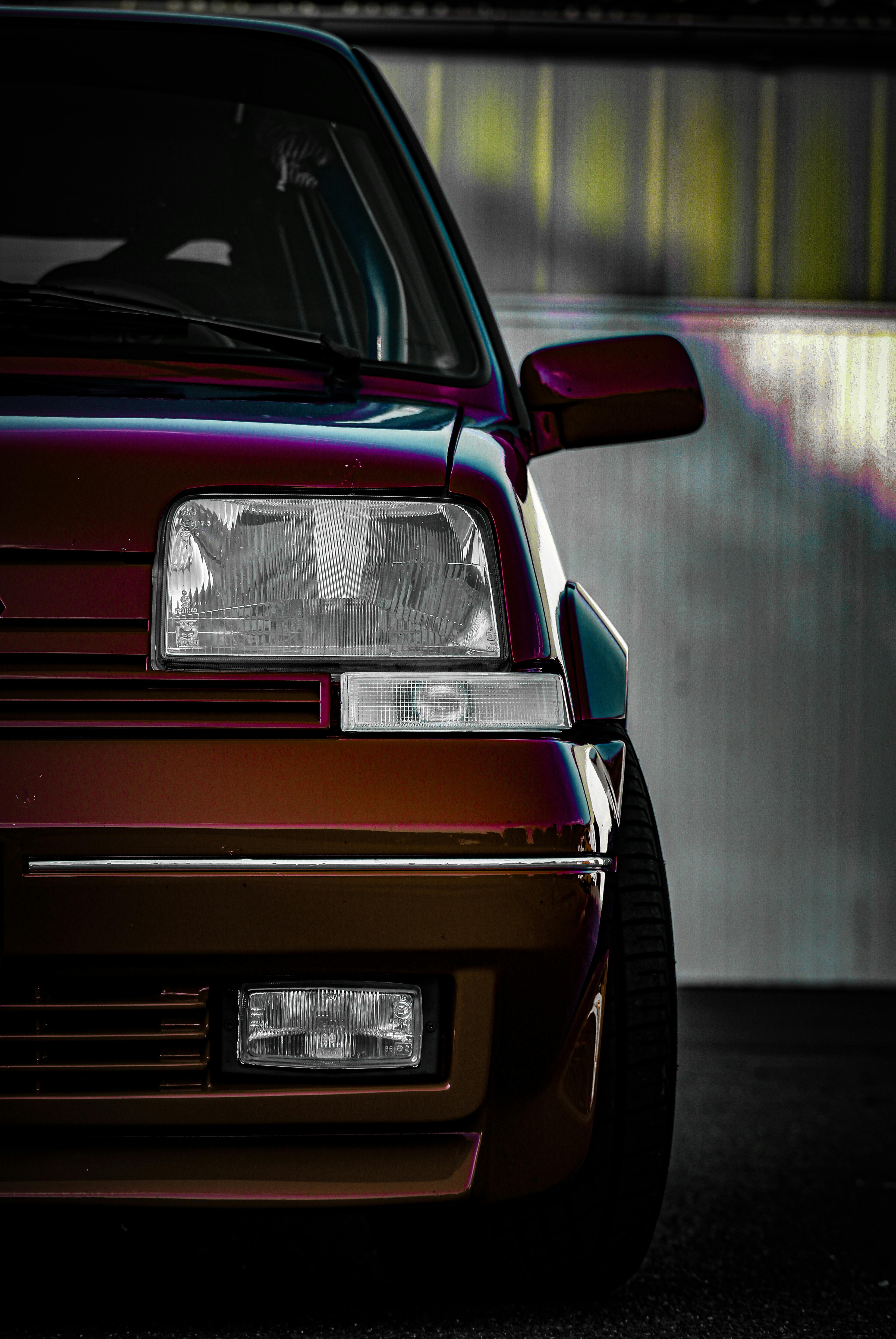
The 1980s stand as a truly transformative era for the automotive world, a decade brimming with bold designs, innovative technologies, and the rise of high-performance sports cars that pushed the limits of speed and aesthetics. While many iconic machines from this period remain legendary, often celebrated with sky-high price tags, a hidden trove of vintage gems exists—vehicles that, for various reasons, were often overlooked or undervalued in their time but are now quietly climbing in appreciation among enthusiasts and collectors alike.
For those with a keen eye and a passion for automotive history, owning a retro vehicle is about much more than simply getting from point A to point B. It’s an appreciation of history, a love for distinctive style, and, quite often, a smart investment. The collector car market isn’t just about Ferraris and seven-figure auctions; it’s also about identifying those models flying under the radar, offering rarity, performance, and design appeal without requiring exceptionally deep pockets.
In this extensive exploration, we delve into a selection of truly captivating 1980s sports cars that offer the thrill of owning a classic without breaking the bank. These vehicles, once under the radar, are now recognized for their unique attributes, passionate followings, and burgeoning investment potential, making them perfect candidates for any savvy collector looking to expand their garage today. Let’s start our journey with the first seven of these fascinating machines.
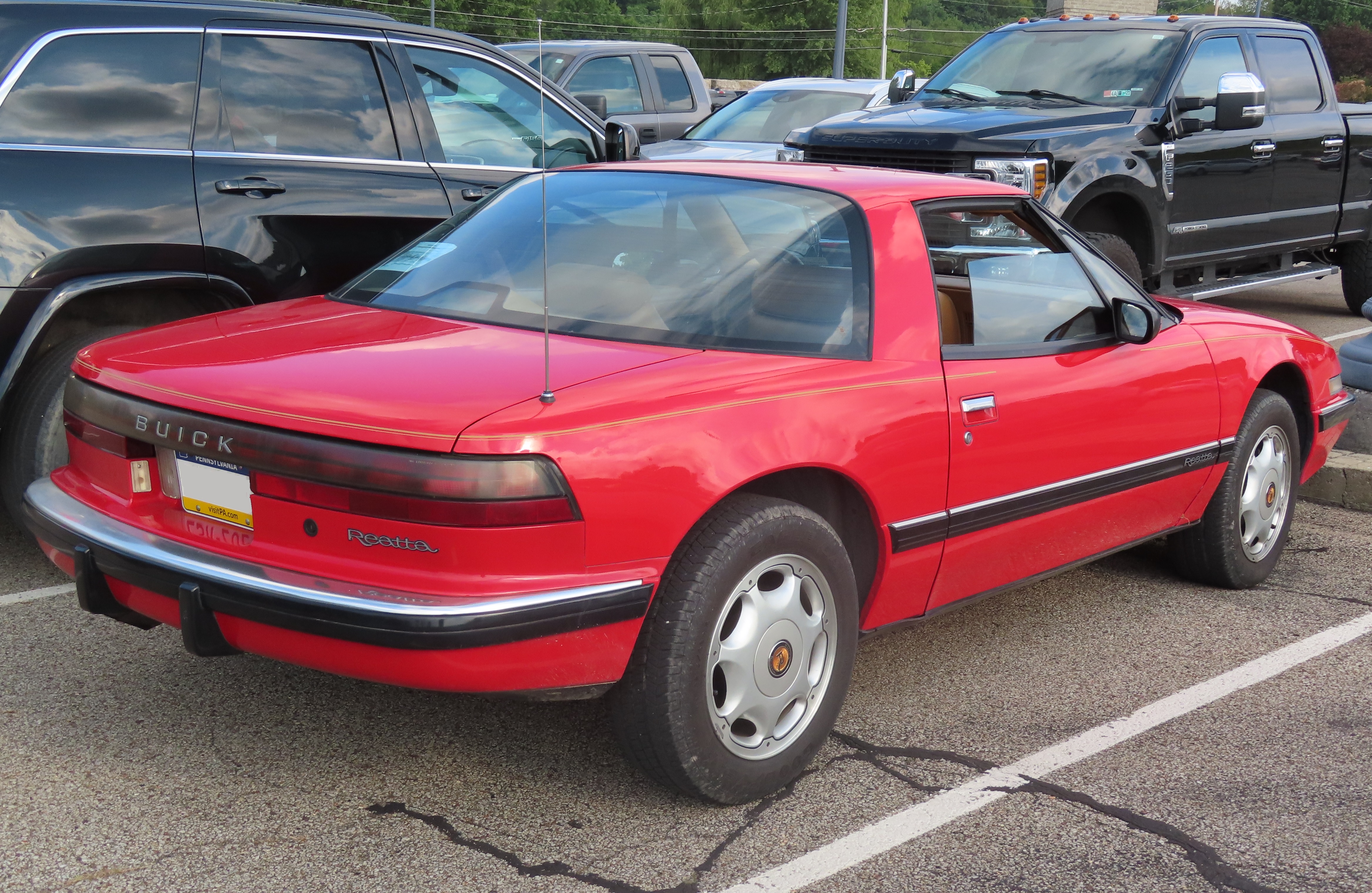
1. **Buick Reatta**The Buick Reatta is one of those intriguing 1980s cars that often surprises enthusiasts. Built in Lansing, it presented a unique blend of style and comfort that distinguished it within Buick’s lineup. At a time when many overlooked it, the Reatta was quietly cultivating a dedicated following, a testament to its distinctive appeal and sophisticated engineering.
What makes the Reatta a smart buy today for collectors is its underlying practicality combined with its niche appeal. It utilizes common GM parts, which significantly eases the burden of maintenance – a crucial factor for anyone considering a vintage vehicle. This accessibility to parts contrasts sharply with the often-exorbitant costs associated with maintaining more exotic classics, making the Reatta a far more approachable investment.
Furthermore, its 3.8-liter V6 engine provides smooth, reliable power, offering a pleasant and confident driving experience that holds up well even by modern standards. The Reatta might not have been a flash-in-the-pan sensation, but its enduring quality and unique place in automotive history are now being appreciated. For collectors drawn to cars that fly under the radar but possess passionate followings, the Reatta undeniably warrants a closer look as a distinctive piece of 1980s Americana.
Car Model Information: 1988 Buick Reatta Base 2dr Coupe
Name: Buick Reatta
Manufacturer: General Motors
Related: Buick Riviera#Seventh generation (1986–1993),Oldsmobile Toronado#Fourth generation (1986–1992),Cadillac Eldorado#Eleventh generation (1986–1991)
Production: 1988–1991
Chassis: unibody
Platform: GM E platform
BodyStyle: coupe
Engine: Buick V6 engine#Pre-Series I,V6 engine
Designer: Dave McIntosh (1983)
Transmission: Turbo-Hydramatic 125#Turbo-Hydramatic 440-T4,automatic transmission
Wheelbase: 98.5 in
Abbr: on
Length: 183.7 in
Width: 73.0 in
Height: 51.2 in
Weight: 3377 lb
Assembly: Lansing, Michigan
Layout: Front-engine, front-wheel-drive layout
Class: Grand tourer
Caption: 1988 Buick Reatta coupe
Categories: 1990s cars, Articles with short description, Buick vehicles, Cars discontinued in 1991, Cars introduced in 1988
Summary: The Buick Reatta is a low-volume transverse front-engine, front-wheel drive, two-door, two-seater grand tourer manufactured and marketed by Buick as a coupe (1988–1991) and convertible (1990–1991) — both featuring a 3.8 liter V6 engine and shortened version of the GM E platform, shared with the seventh generation Buick Riviera.
As Buick’s first two-seater and its first convertible since the 1985 Riviera, the Reatta was manufactured in a highly specialized assembly program at the Reatta Craft Center (later known as the Lansing Craft Center) in Lansing, Michigan—achieving production of over 21,000 units in four years.
Get more information about: Buick Reatta
Buying a high-performing used car >>>
Brand: Buick Model: Reatta
Price: $10,999 Mileage: 21,011 mi.
Read more about: Beyond the Hype: 14 Classic Cars That Haven’t Held Their Value in Today’s Market
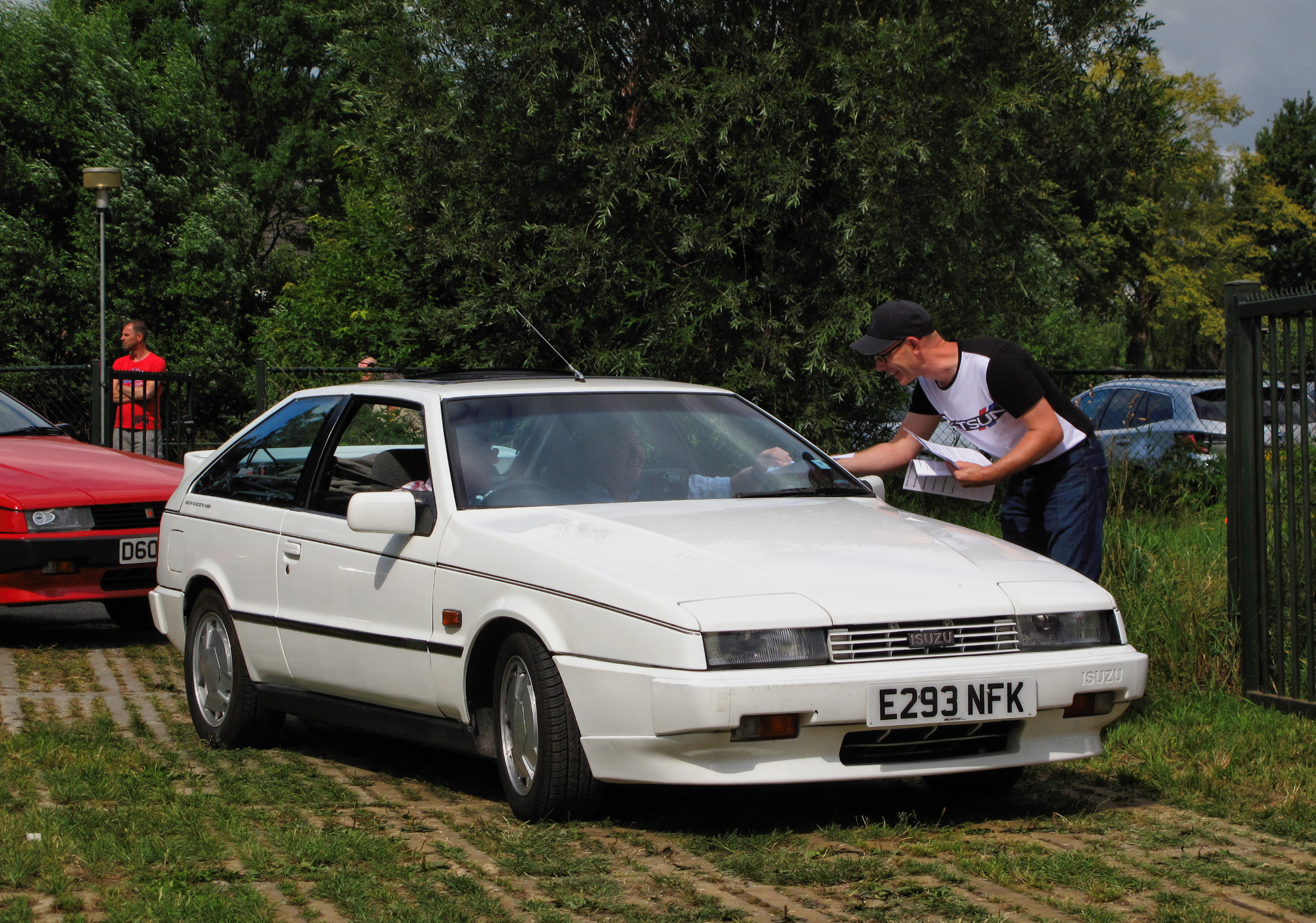
2. **Isuzu Piazza**If your taste leans towards truly unique sports cars with a touch of Japanese flair, the Isuzu Piazza is an absolute standout that demands attention. This sleek, Japanese hatchback from the 1980s boasted sharp styling that, even decades later, continues to turn heads and differentiate it from its contemporaries. Its design was not merely fashionable but genuinely distinctive, marking it as a visually compelling vehicle.
One of the most compelling aspects of the Piazza for collectors is its inherent rarity. “Not many were sold, making it pretty rare. You’ll find only a handful left, which adds to its collectible appeal,” as noted in the context. This scarcity is a significant driver of value in the collector market, as fewer examples mean greater desirability for those seeking something truly exclusive and hard to come by.
Beyond its rarity, the Piazza was also praised for its driving dynamics, described as being nimble and fun to drive. This combination of distinctive styling, impressive rarity, and an engaging driving experience positions the Piazza as an excellent acquisition for collectors. If you’re yearning for something truly different from the usual parade of 1980s sports cars, the Isuzu Piazza offers an opportunity to own a unique and increasingly sought-after classic.
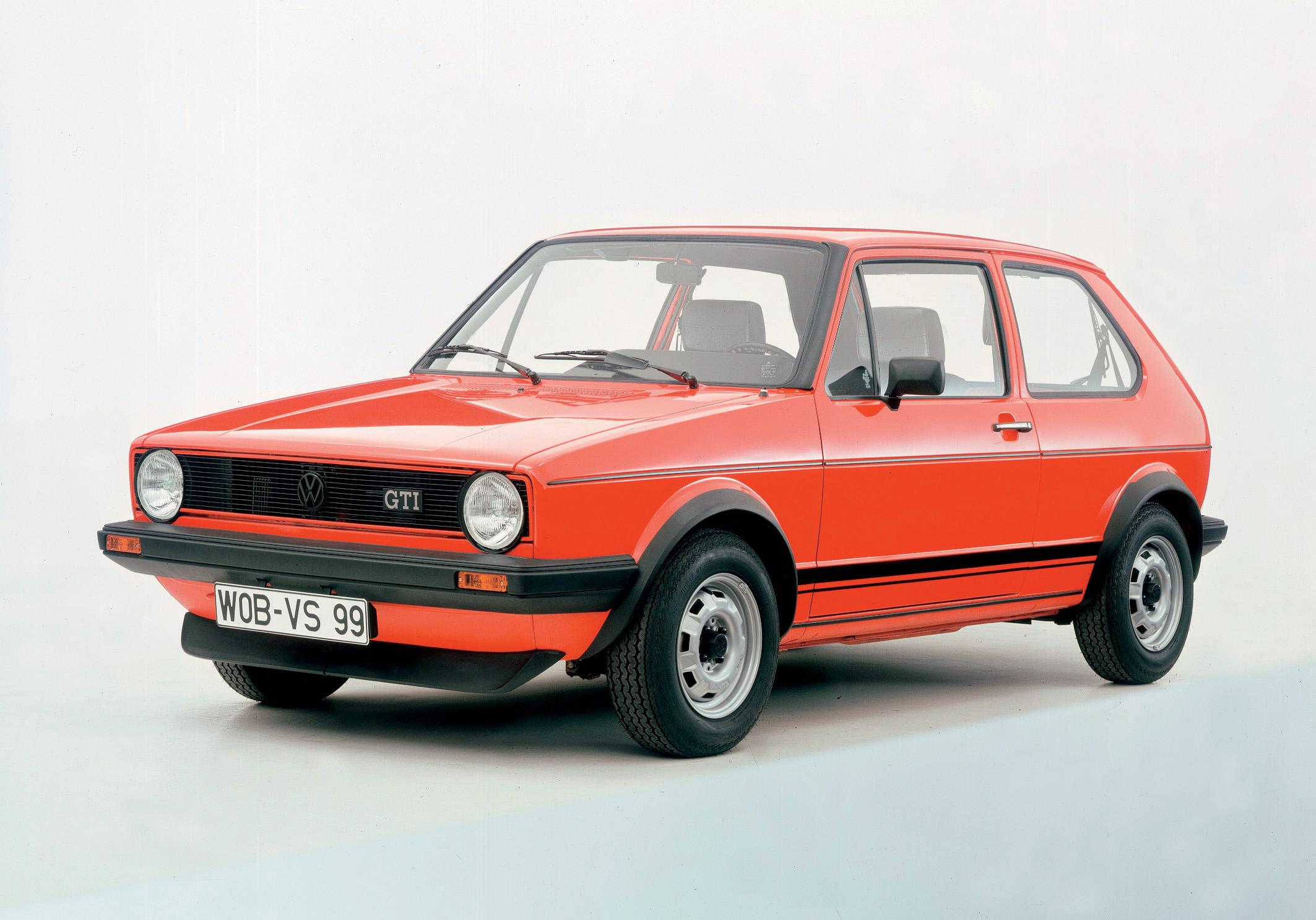
3. **Volkswagen GTI Mk1**The Volkswagen GTI Mk1 holds a special place in automotive history, often credited with inventing the ‘hot hatch’ segment. While it first appeared in the late 1970s, its influence and appeal truly made a significant impact throughout the 1980s. For classic car enthusiasts, it remains a fantastic choice for any collection, embodying a sporty yet practical design that continues to resonate.
One of the GTI Mk1’s defining characteristics is its lively 110bhp engine, which provides a surprisingly peppy and engaging driving experience for a compact car of its era. It’s not just about raw speed; the car possesses a fun, rev-happy character that ensures every drive is genuinely engaging. This blend of accessible performance and spirited handling is a key reason for its enduring popularity.
Initially, the GTI Mk1 might not have been the flashiest model on the market, often overshadowed by more overtly luxurious or powerful sports cars. However, today, it has evolved into a true cult favorite among enthusiasts, a testament to its timeless design and fundamental driving pleasure. “Its blend of style and performance still holds up well,” making it a smart and satisfying investment for collectors who appreciate an icon that redefined an entire category and continues to deliver an exhilarating experience.
Car Model Information: 2019 Land Rover Range Rover Sport HSE
Name: Volkswagen Golf Mk1 (Type 17)
Caption: Autostadt
Manufacturer: Volkswagen
Aka: Volkswagen Rabbit (US/Canada),Volkswagen Caribe (Mexico),Volkswagen Citi Golf
Production: May 1974 – September 1983,1976–1985 (Yugoslavia),1979–April 1993 (Cabriolet),1978–2009 (South Africa),1977–1987 (Mexico)
Assembly: Wolfsburg,Clayton, Victoria,Audi Brussels,New Stanton, Pennsylvania,Uitenhage,Shah Alam,Puebla, Puebla,Sarajevo
Designer: Giorgetto Giugiaro
Class: Small family car
BodyStyle: hatchback,pickup truck,convertible (car)
Platform: Volkswagen Group A platform#A1
Related: ubl
Layout: FF layout
Engine: ubl
Transmission: manual transmission,5-speed manual,automatic transmission
Wheelbase: cvt
Length: cvt
Width: cvt
Height: cvt
Weight: cvt
Predecessor: Volkswagen Beetle
Successor: Volkswagen Golf Mk2
Categories: 1980s cars, 1990s cars, 2000s cars, All articles with dead external links, All articles with unsourced statements
Summary: The Volkswagen Golf Mk1 is the first generation of a small family car manufactured and marketed by Volkswagen. It was noteworthy for signalling Volkswagen’s shift of its major car lines from rear-wheel drive and rear-mounted air-cooled engines to front-wheel drive with front-mounted, water-cooled engines that were often transversely-mounted.
Successor to Volkswagen’s Beetle, the first generation Golf debuted in Europe in May 1974 with styling by Giorgetto Giugiaro’s Italdesign.
Get more information about: Volkswagen Golf Mk1
Buying a high-performing used car >>>
Brand: Volkswagen Model: GTI Mk1
Price: $27,489 Mileage: 77,935 mi.
Read more about: Navigating 2025: Uncovering the Cars with the Lowest Maintenance Costs for Savvy Buyers

4. **Toyota MR2 (AW11)**The first-generation Toyota MR2, known by its chassis code AW11, was a truly revolutionary sports car that emerged in the 1980s. It immediately carved out a unique niche by offering a mid-engine layout, a configuration typically reserved for exotic supercars, but at a surprisingly affordable price point. This made the MR2 stand out dramatically from other small sports cars of its time.
Collectors will particularly appreciate its lightweight design, a crucial factor that contributes to its renowned nimble handling and genuinely fun driving experience. Paired with a modest yet remarkably reliable four-cylinder engine, the MR2 AW11 represents an ideal and affordable entry into the world of mid-engine sports cars. It perfectly demonstrates that you don’t need immense power to have an engaging and exhilarating drive.
The MR2 AW11 quickly built a loyal fanbase, enthusiasts who deeply value its simplicity, distinctive style, and exceptional driver involvement. “The first-generation Toyota MR2 is a lightweight, mid-engine sports car that delivers go-kart-like handling. Its rev-happy four-cylinder engine and affordable maintenance costs make it a fun and reliable choice for collectors looking for an engaging and affordable classic Japanese car.”
Car Model Information: 1993 Toyota MR2 Turbo
Name: Toyota MR2
Caption: Second generation MR2
Manufacturer: Central Motors
Aka: Toyota MR (France and Belgium)
Production: 1984–2007
Assembly: Sagamihara, Kanagawa
Class: Sports car
Layout: Rear mid-engine, rear-wheel-drive layout
ModelYears: 1985–2007
Categories: 1990s cars, 2000s cars, All Wikipedia articles written in American English, All articles containing potentially dated statements, All articles needing additional references
Summary: The Toyota MR2 is a two-seater sports car which was manufactured and marketed by Toyota from 1984 until 2007 over three generations. It was the first Japanese rear-mid-engine, rear-wheel-drive production car and was sold around the world. The first generation (W10) was produced from 1984 to 1989, the second generation (W20) from 1989 to 1999, and the third generation (W30) from 1999 to 2007.
Conceived as a small, economical and sporty car, the MR2 features a straight-four engine, transversely mounted in front of the rear axle, four-wheel disc brakes, and fully independent coilover suspension with MacPherson struts on each wheel.
The name MR2 stands for either “mid-ship run-about 2-seater” or “mid-engine, rear-wheel-drive, 2-seater”. In French-speaking markets, the vehicle was renamed Toyota MR because the abbreviation “MR2” sounds like the profanity “merdeux” when spoken in French.
Get more information about: Toyota MR2
Buying a high-performing used car >>>
Brand: Toyota Model: MR2
Price: $21,499 Mileage: 145,631 mi.
Read more about: Kings of the Asphalt: Reliving the Glory Days of 1980s Sports Cars and Supercars That Defined a Generation

5. **Mazda RX-7 (FB)**Owning an 1980s Mazda RX-7 FB means possessing a vehicle with a genuinely unique powertrain: Mazda’s distinctive rotary engine. This feature alone sets it apart from the vast majority of sports cars, offering a smooth, high-revving character that is unlike any piston engine. The FB was Mazda’s first-generation RX-7, celebrated for its lightweight design and exceptionally sharp handling characteristics.
While your RX-7 FB might not possess the flashy aesthetic or raw power of later models, it has cultivated a remarkably loyal following among those who appreciate its purity of design and mechanical innovation. It represents a fantastic entry point into the captivating world of classic Japanese sports cars, a segment that has seen considerable appreciation in recent years.
Collectors and driving enthusiasts alike continue to appreciate the RX-7 FB for its compelling mix of simplicity and performance. Its distinctive engine, combined with its balanced chassis, provides an engaging and rewarding driving experience that remains as appealing today as it was in the 1980s. This first-generation model is a true classic that offers a unique flavor in the vintage sports car market, cementing its status as an underrated gem.
Car Model Information: 1989 Mazda RX-7
Name: Mazda RX-7
Caption: 1994 Mazda RX-7 R2 (FD3S)
Manufacturer: Mazda
Aka: Mazda Savanna RX-7 (Japan, 1978–1991),Mazda ɛ̃fini RX-7 (Japan, 1991–1997)
Class: Sports car
Production: 1978–2002,811,634 produced
Assembly: Hiroshima
Platform: Mazda F platform
Layout: Front-engine, rear-wheel-drive layout#Front mid-engine, rear-wheel-drive layout
Predecessor: Mazda RX-3
Successor: Mazda RX-8
Categories: 1980s cars, 1990s cars, 2000s cars, 24 Hours of Le Mans race cars, All Wikipedia articles written in British English
Summary: The Mazda RX-7 is a sports car which was manufactured and marketed by Mazda from 1978 to 2002 across three generations. It has a front mid engine, rear-wheel-drive layout and uses a compact and lightweight Wankel rotary engine.
The first-generation RX-7, codenamed SA (early) and FB (late), is a two-seater coupé with a rear hatchback. It featured a 12A carbureted rotary engine as well as the option for a 13B rotary engine with electronic fuel injection in later years. The second-generation RX-7, carrying the internal model code FC, was offered as a two-seater coupé with a 2+2 option available in some markets, as well as in a convertible body style. This was powered by the 13B rotary engine, offered in naturally aspirated or turbocharged forms. The third-generation RX-7, model code FD, was offered as a two-seater coupé with a 2+2 version offered as an option for the Japanese market. It featured a sequentially turbocharged 13B REW engine.
More than 800,000 RX-7s were manufactured over its lifetime.
Get more information about: Mazda RX-7
Buying a high-performing used car >>>
Brand: Mazda Model: RX-7
Price: $88,997 Mileage: 48,130 mi.
Read more about: Beyond the Neon Glow: Revisiting 14 Unforgettable ’80s Sports Cars That Defined a Decade of Driving Passion

6. **Nissan 300ZX (Z31)**The Nissan 300ZX Z31 is a fascinating 1980s sports car that, despite its considerable merits, is often overlooked within the broader Z-car lineage. Positioned chronologically between the beloved classic Datsun Zs and the more famous Z32 generation, the Z31 often finds itself in the shadows, not receiving the attention it truly deserves. This oversight, however, presents a prime opportunity for savvy collectors.
What makes the Z31 such an appealing prospect is its compelling blend of retro style and, in many iterations, turbocharged performance. This combination offers a unique riding experience that stands out from its contemporaries. Its distinct 1980s aesthetic, often characterized by sharp lines and a futuristic appeal, is now increasingly valued by enthusiasts seeking a nostalgic yet capable machine.
Crucially, the Nissan 300ZX Z31 remains reasonably priced in the current collector car market. “It’s priced reasonably and can be a fun, affordable collectible if you want something different from the usual classics.” This affordability, coupled with its engaging driving dynamics and growing appreciation, makes it a truly smart buy. For those looking to invest in a distinctive 1980s Japanese sports car that offers significant bang for the buck, the Z31 is an excellent and often underappreciated choice.
Car Model Information: 1990 Nissan 300ZX GS
Name: Nissan 300ZX
Class: Grand Tourer
Manufacturer: Nissan
Production: 1983–2000
Assembly: ubl
Aka: Nissan Fairlady Z
Layout: Front-engine, rear-wheel-drive layout
Predecessor: Nissan Fairlady Z (S130)
Successor: Nissan 350Z
Categories: 1990s cars, 2+2 coupés, All articles needing additional references, All articles with unsourced statements, Articles needing additional references from May 2021
Summary: The Nissan 300ZX is a sports car that was produced across two different generations. As with all other versions of the Z, the 300ZX was sold within the Japanese domestic market under the name Fairlady Z.
It was sold in Japan from 1983 to 2000 and in the United States from 1984 to 1996, the 300ZX name followed the numerical convention initiated with the original Z car, the Nissan Fairlady Z (S30), which was marketed in the U.S. as the 240Z. The addition of the “X” to the car’s name was a carryover from its predecessor, the 280ZX, to signify the presence of more luxury and comfort oriented features. The first generation 300ZX known as the Z31 model was produced from 1983 through 1989 and was a sales success becoming the highest volume Z-car for Nissan.
To become even more competitive in the sports car market, the second generation 300ZX was driven up-market. It was redesigned to be faster and to feature more advanced technology, but came with a higher price than its predecessor, with consecutive price increases each model year of availability. As such, sales dwindled each year, a trend in the higher end sports car market at the time, and Nissan placed a hiatus on selling new Nissan Z-Cars to the US after the 1996 model year, though the car would continue to be sold in the Japan domestic market until 2001 in low production numbers.
Car and Driver placed the Z32 on its Ten Best list for seven consecutive years, each model year of its availability in the United States. Motor Trend awarded it as the 1990 Import Car of the Year. The Nissan 350Z, officially the Z33 generation Z-Car, succeeded the 300ZX in 2003.
Get more information about: Nissan 300ZX
Buying a high-performing used car >>>
Brand: Nissan Model: 300ZX
Price: $24,597 Mileage: 21,680 mi.
Read more about: Shifting Gears: 11 Classic 1990s Cars That Are Now Highly Collectible
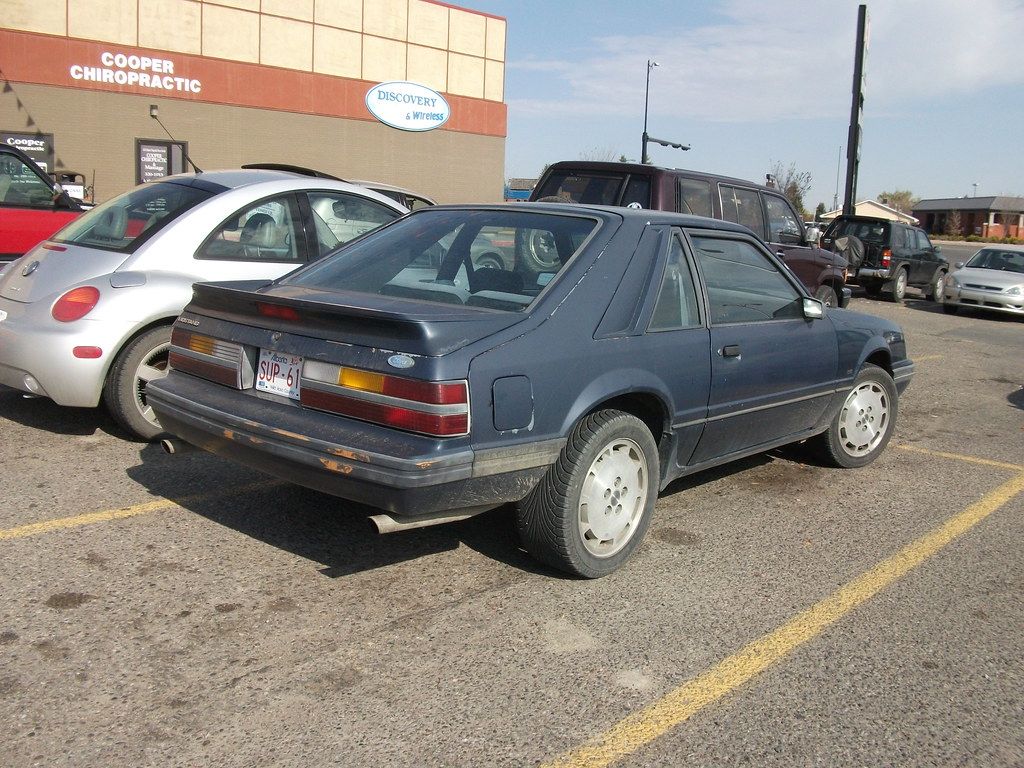
7. **Ford Mustang SVO**The Ford Mustang SVO represents a significant and rather unique departure from the traditional Mustang formula, making it a standout in the 1980s landscape and a compelling choice for collectors today. Unlike its V8-powered brethren, the SVO was engineered with a distinct focus on European-inspired handling, transforming the iconic pony car into a remarkably sharp corner carver.
Under the hood, you’ll find a turbocharged 2.3-liter four-cylinder engine, a bold decision that broke away from the typical V8 expectation of the time. This gave the SVO a different kind of performance character, one that felt more modern and technologically advanced. It wasn’t about brute force, but rather a more refined and agile driving experience, emphasizing balance and responsiveness over raw, straight-line speed.
Many enthusiasts, particularly those who appreciate innovation and a departure from the norm, hold the SVO in high regard. They value its unique mix of style, cutting-edge technology for its era, and truly fun driving dynamics. “It’s a Mustang that often flies under the radar but has earned a devoted following,” making it an ideal candidate for collectors seeking a distinctive piece of Mustang history that offers both a unique driving experience and strong investment potential as its story continues to be rediscovered.
The 1980s, a decade of audacious automotive engineering and design, continues to reveal its hidden treasures to those with an informed eye. While the first seven entries offered a glimpse into some truly compelling machines, our journey through this captivating era of undervalued sports cars is far from over. We now delve deeper into the remaining automotive marvels that, despite their initial understated presence, are now gaining significant traction and appreciation within the classic car market. Their historical significance, spirited performance credentials, and undeniable charm make them irresistible prospects for modern collectors.
Car Model Information: 2019 Land Rover Range Rover Sport HSE
Name: Ford Mustang SVO
Manufacturer: Ford Motor Company
Production: 1984–1986
BodyStyle: liftback
Platform: Ford Fox platform
Layout: FR layout
Assembly: Dearborn Assembly Plant,Dearborn, Michigan
Successor: Ford Mustang SVT Cobra
Wheelbase: 100.5 in
Abbr: on
Length: 181.0 in
Width: 69.1 in
Height: 51.9 in
Weight: cvt
Related: ubl
Engine: Ford Pinto engine#LL23,Straight-4,Turbocharger
Transmission: BorgWarner T-5 transmission,manual transmission
Caption: 1986 Mustang SVO
Categories: All articles with unsourced statements, Articles with short description, Articles with unsourced statements from July 2024, Articles with unsourced statements from May 2020, Commons category link is on Wikidata
Summary: The Mustang SVO is a limited-production version of the third generation Ford Mustang sold from 1984 to 1986, with fewer than 10,000 built. SVO is an acronym referring to Special Vehicle Operations, Ford Motor Company’s racing division formed in 1980 to oversee all motorsports operations, distribute performance parts developed in racing programs, and develop high-performance production vehicles derived from motorsports technologies. Although it departed both physically and mechanically from any prior version of the Mustang, it held the same spot within the lineup, both in terms of performance over “lesser” variants and in prestige, as had variants such as the Shelby-tuned and “BOSS” Mustangs of the 1960s and 1970s.
Get more information about: Ford Mustang SVO
Buying a high-performing used car >>>
Brand: Ford Model: Mustang SVO
Price: $27,489 Mileage: 77,935 mi.
Read more about: Discover 15 Underappreciated Sports Cars That Are Hidden Gems

8. **Chevrolet Cavalier Z24**When one thinks of 1980s sports cars, the Chevrolet Cavalier Z24 might not be the first name that springs to mind, and that’s precisely why it’s a brilliant find for collectors today. It wasn’t designed to be a flashy, high-performance machine in the vein of a European exotic. Instead, it represented an approachable and honest take on sporty driving for the everyday enthusiast.
Equipped with a modest 2.8L engine producing around 125 horsepower, coupled with a front-wheel-drive layout, the Z24 delivered a straightforward and accessible driving experience. You might appreciate its simple, clean design, which has a certain period charm, and its decent handling characteristics for the time. It was a car that offered a hint of excitement without the extravagance.
Today, these cars have quietly amassed a dedicated cult following among enthusiasts. These are the drivers who fondly remember their first rides, their weekend drives, or simply appreciate a slice of honest, everyday automotive history. Finding a well-kept Z24 from the mid to late ’80s now feels like uncovering a genuine artifact, a testament to its enduring, albeit subtle, appeal and its potential as a nostalgic and affordable collectible.
Car Model Information: 2003 Chevrolet Cavalier LS Sport
Name: Chevrolet Cavalier
Manufacturer: Chevrolet
Production: 1981–2005,2016–2021 (China)
ModelYears: 1982–2005,2016–2021 (China),2019–2025 (Mexico)
Class: Compact car
Predecessor: Chevrolet Monza
Successor: Chevrolet Cobalt
Platform: GM J platform
Layout: Front-engine, front-wheel-drive
Categories: 1990s cars, 2000s cars, 2010s cars, All Wikipedia articles needing clarification, All accuracy disputes
Summary: The Chevrolet Cavalier is a line of compact cars produced by Chevrolet. Serving as the replacement of the Chevrolet Monza, the Cavalier was the second Chevrolet model line to adopt front-wheel drive. Three versions of the Cavalier have been sold, including three generations sold in North America from model years 1982 to 2005, a version produced by SAIC-GM for China from 2016 to 2021, and a SAIC-GM version produced for Mexico since the 2019 model year.
The Cavalier was among the inaugural vehicles of the GM J platform. One of the first “world cars” of General Motors, the J platform was developed for use by each North American GM division (with the exception of GMC), alongside international models for Opel, Vauxhall, and Holden. Though sharing chassis underpinnings, J-body cars from Europe and Australia used slightly different body designs and different powertrains; in Europe, the Vauxhall Cavalier and Opel Ascona were marketed as mid-size cars. Initially a divisional counterpart of the Buick Skyhawk, Cadillac Cimarron, Oldsmobile Firenza, and Pontiac J2000, the Cavalier was primarily marketed alongside the Pontiac Sunbird (renamed the Pontiac Sunfire for 1995).
The 1982–2005 Cavalier was produced by multiple GM facilities across North America; all models from the 1990s on were made at Lordstown Assembly, which became synonymous with the Cavalier and compact Chevrolet models in general from the earlier Chevrolet Vega all the way to the Chevrolet Cruze. For 2005, the Chevrolet Cobalt replaced the model line in North America.
Get more information about: Chevrolet Cavalier
Buying a high-performing used car >>>
Brand: Chevrolet Model: Cavalier
Price: $6,200 Mileage: 170,700 mi.
Read more about: Remember These? The 11 Everyday 1985 Cars That Are Now Absolute Classics You’ll Wish You Still Had
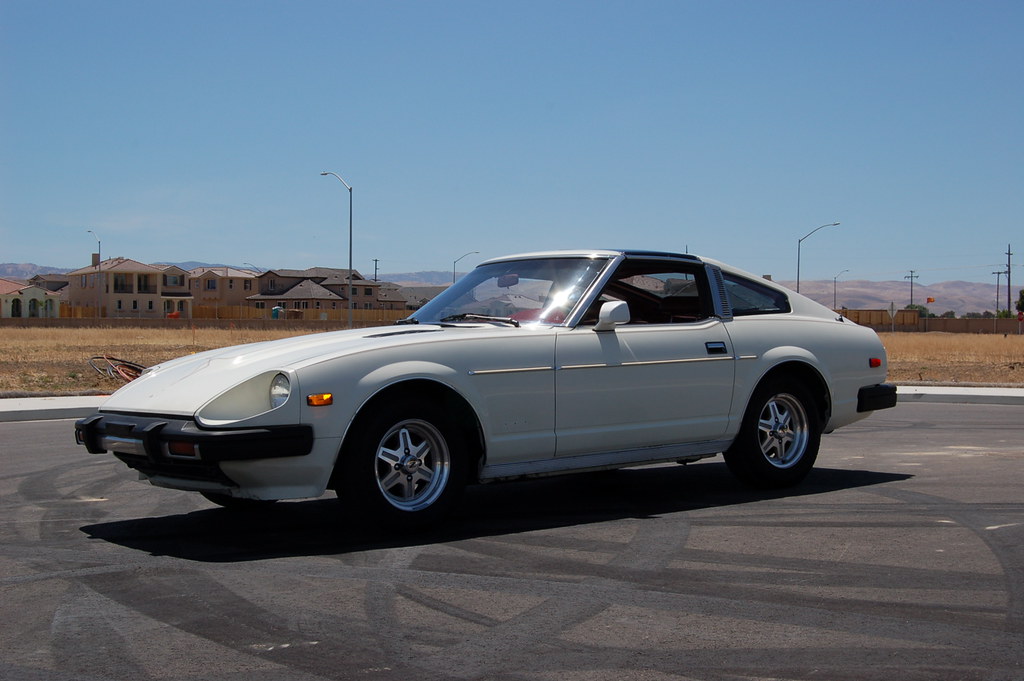
9. **Datsun 280ZX**For those with a penchant for classic cars that offer a compelling blend of style, comfort, and performance, the Datsun 280ZX presents an undeniable allure. This iconic Japanese sports car masterfully combined sporty looks with a remarkably comfortable ride, making it an excellent choice whether you were seeking a spirited daily driver or a charming weekend cruiser. Its design language captures the essence of late 70s and early 80s aesthetics with a distinctive flair.
One of the significant advantages of the 280ZX for collectors is its reputation for ease of maintenance and its relative simplicity to work on. This practicality is a huge plus, as it means less time in the garage worrying about complex repairs and more time on the open road enjoying the drive. Its robust engineering means that with proper care, these cars are built to last and continue to perform admirably.
Adding a layer of exclusivity for the discerning collector, the 10th Anniversary Edition from 1980 is particularly noteworthy. With only 3,000 units ever produced, this special edition carries an inherent rarity that significantly boosts its collectible appeal. For those looking to add a truly unique and historically significant piece to their garage, the Datsun 280ZX, especially in its rare iterations, is a smart and rewarding acquisition.
Car Model Information: 1980 Datsun 280ZX 10TH ANNIVERSARY
Name: Nissan S130
Aka: Datsun 280ZX,Nissan Fairlady Z
Caption: 1982 Datsun 280ZX 2+2 (Europe)
Class: Sports car
Manufacturer: Nissan
BodyStyle: fastback
Production: June 1978–1983
Layout: Front-engine, rear-wheel-drive layout
Assembly: ubl
Engine: Nissan L engine#L20,Straight-six engine
Transmission: Borg-Warner,Borg-Warner T-5 transmission
Predecessor: Nissan Fairlady Z (S30)
Successor: Nissan 300ZX#Z31
Weight: cvt
Wheelbase: cvt
Length: cvt
Width: cvt
Height: cvt
Categories: 1980s cars, All articles needing additional references, All articles with unsourced statements, Articles needing additional references from May 2018, Articles with short description
Summary: The Nissan S130 is a sports coupé produced by Nissan in Japan from 1978 until 1983. It was sold as the Datsun 280ZX, Nissan Fairlady Z and Nissan Fairlady 280Z, depending on the market. In Japan, it was exclusive to Nissan Bluebird Store locations. It was the second generation Z-car, replacing the Nissan Fairlady Z (S30) in late 1978. The 280ZX was the first time the “by Nissan” subscript was badged alongside the Datsun logo, along with Nissan trucks. The 280ZX was Motor Trend’s import car of the year for 1979. The 280ZX was replaced by the Nissan 300ZX in 1984.
Get more information about: Nissan Fairlady Z (S130)
Buying a high-performing used car >>>
Brand: Datsun Model: 280ZX
Price: $69,980 Mileage: 17,351 mi.
Read more about: Driving Dreams: 12 Vintage Cars That Are Surprisingly Affordable Again for Every Enthusiast

10. **Geo Storm GSi**While often associated with the early 1990s, the Geo Storm GSi draws its spirit and design cues directly from the tail end of the 1980s, making it a fitting inclusion for those exploring the undervalued gems of the era. It emerged as a sporty compact that, despite its humble branding, packed a surprising punch. For enthusiasts seeking a lively and agile ride without a hefty price tag, the GSi quickly made a name for itself.
Under its sleek hood, the GSi housed a capable 140 horsepower 1.8L engine. This powerplant, combined with its lightweight frame, ensured that the Storm GSi delivered a genuinely spirited performance. While it might feel a bit underpowered when compared to today’s hyper-modern vehicles, its distinctive design still possesses the ability to turn heads and spark conversations among those who appreciate period-specific automotive aesthetics.
Many fans continue to appreciate the Geo Storm GSi for its simple, unadulterated fun nature. It’s a car that embodies the ethos of driving enjoyment without unnecessary complexities. If you relish the opportunity to drive something truly unique from that transitional era between the 80s and 90s, offering an engaging experience and a quirky charm, the Geo Storm GSi is a compelling and increasingly collectible option.
Read more about: The Truth About Luxury Retirement Communities: Unveiling What Today’s Seniors Really Seek
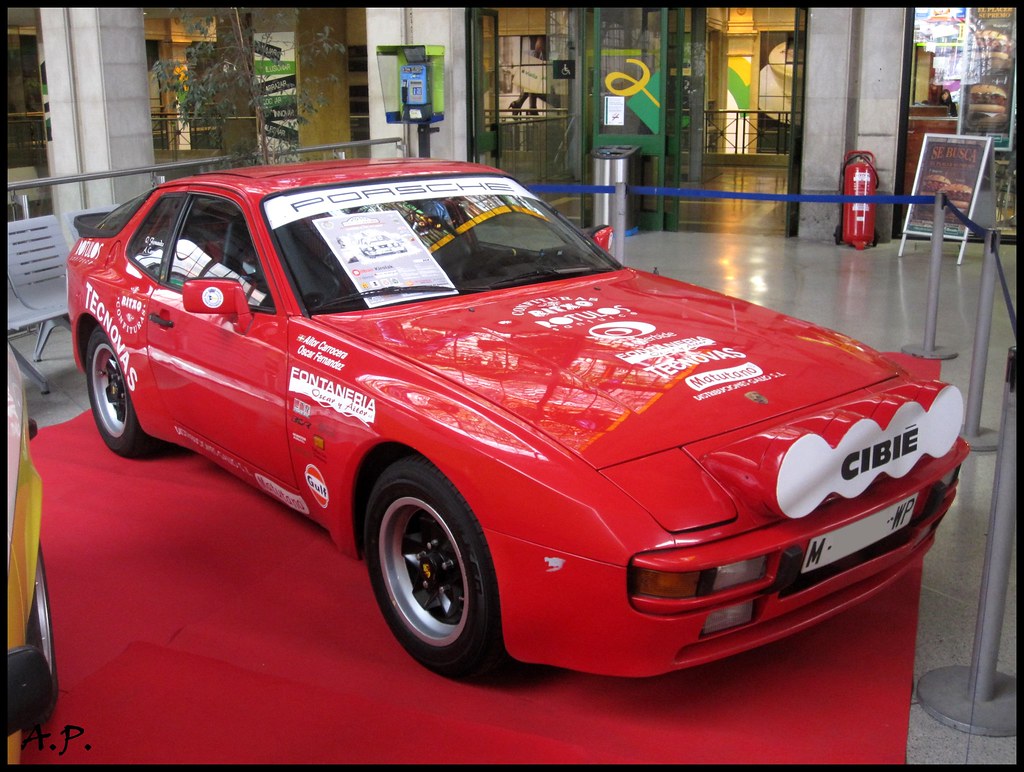
11. **Porsche 944**The Porsche 944, often overlooked and unfairly shadowed by its more famous 911 sibling, stands as a testament to exceptional engineering and driving dynamics from the 1980s. Its unique front-engine, rear-transaxle layout wasn’t just a design choice; it was a stroke of genius that gifted the 944 with an almost perfect 50/50 weight distribution, translating into truly outstanding balance and handling characteristics that thrill drivers to this day.
Powered by a robust four-cylinder engine, the 944 is far more than just a stepping stone to a 911; it is a meticulously well-engineered sports car in its own right. It brilliantly combines Porsche’s iconic design language—a clear evolution of the transaxle lineage—with a level of affordability that is rare for a car bearing the Stuttgart crest. This blend of pedigree and value makes it an incredibly attractive proposition for aspiring collectors.
For those on a budget, the 944 is a particularly smart choice, not least because its parts remain relatively easy to find and source. This mitigates many of the typical financial concerns associated with classic car ownership. As one expert noted, it’s a “fun to drive” vehicle that’s rapidly “gaining traction as a retro-cool sports car with real Porsche DNA,” solidifying its status as an undervalued gem ripe for appreciation.
Car Model Information: 1987 Porsche 944
Caption: 1986 944 Turbo (951) US-spec
Name: Porsche 944
Manufacturer: Porsche AG
Class: Sports car
Production: 1982–1991
Layout: Front-engine, rear-wheel-drive layout
Assembly: Neckarsulm,Stuttgart
Designer: Harm Lagaay
Predecessor: Porsche 924
Successor: Porsche 968
BodyStyle: coupé,convertible
Engine: Straight-four engine,Turbocharger,2.7 L M44/12 I4,3.0 L M44/41 I4
Wheelbase: 2400 mm
Abbr: on
Length: 1986–1988: {{convert,4318,mm,in,1,abbr=on
Width: 1735 mm
Height: 1275 mm
Transmission: Automatic transmission,Manual transmission
Weight: Pre-1988: {{convert,1180,kg,lb,0,abbr=on
Categories: 1990s cars, All articles needing additional references, All articles with unsourced statements, Articles needing additional references from September 2024, Articles with short description
Summary: The Porsche 944 is a sports car which was manufactured by the German company Porsche from 1982 until 1991. A front-engine, rear-wheel drive model based on the platform of the 924, the 944 was available in coupé or cabriolet body styles, with either naturally aspirated or turbocharged engines. With over 163,000 cars produced, the 944 was the most successful sports car in Porsche’s history until the introductions of the Boxster and 997 Carrera.
Extensive design revisions for the 1992 model year prompted Porsche to drop the 944 nameplate and rebrand the vehicle as the 968.
Get more information about: Porsche 944
Buying a high-performing used car >>>
Brand: Porsche Model: 944
Price: $34,999 Mileage: 79,665 mi.
Read more about: From the Silver Screen to the Garage: Uncovering the Fate of Hollywood’s 14 Most Iconic Movie and TV Cars

12. **BMW E30 3-Series**Few cars from the 1980s command the enduring respect and adoration quite like the BMW E30 3-Series, often hailed as one of the most beloved models in BMW’s illustrious history. Spanning from the early 80s through the very early 90s, its influence defined a generation of compact sports sedans and coupes. Especially revered are the 325i and the legendary M3 versions, which continue to capture the hearts of driving purists.
The E30’s appeal lies in its exceptional driving dynamics, offering precise handling that makes every twist and turn of the road a joy. Its classic rear-wheel-drive layout provides an engaging and balanced feel, while a range of robust engines, from spirited four-cylinders to silky-smooth six-cylinder options, offered compelling performance for their era. This mechanical integrity is a hallmark of German engineering.
With its timeless design, which has aged gracefully into an icon of automotive style, and its undeniable build quality, the E30 remains an incredibly popular and, crucially, an affordable entry point into the world of classic car collecting. It’s a car that offers not just investment potential but also a deeply satisfying ownership experience, embodying the quintessential BMW driving machine of its time.
Car Model Information: 2019 Land Rover Range Rover Sport HSE
Name: BMW 3 Series (E30)
Manufacturer: BMW
Production: 1982–1994
ModelYears: 1984–1991 (North America)
Class: Compact executive car
BodyStyle: Saloon (car),convertible (car),Station wagon
Layout: Front-engine, rear-wheel-drive layout,Front-engine, four-wheel-drive layout
Related: Alpina B3
Engine: ubl
Transmission: Manual transmission,5-speed manual,ZF 3HP22 transmission,ZF 4HP22 transmission
Wheelbase: 2570 mm
Abbr: on
Length: convert
Width: 1645 mm
Height: convert
Weight: convert
Predecessor: BMW 3 Series (E21)
Successor: BMW 3 Series (E36)
Assembly: Munich
Designer: Claus Luthe
ModelCode: E30
Categories: 1990s cars, All Wikipedia articles written in British English, All articles with dead external links, All articles with unsourced statements, Articles with dead external links from February 2022
Summary: The BMW E30 is the second generation of BMW 3 Series, which was produced from 1982 to 1994 and replaced the E21 3 Series. The model range included 2-door saloon (sometimes referred to as a coupé) and convertible body styles, as well as being the first 3 Series to be produced in 4-door saloon and wagon/estate body styles. It was powered by four-cylinder petrol, six-cylinder petrol and six-cylinder diesel engines, the latter a first for the 3 Series. The E30 325iX model was the first BMW to have all-wheel drive.
The first BMW M3 model was built on the E30 platform and was powered by the high-revving BMW S14 four-cylinder petrol engine. The BMW Z1 roadster was also based on the E30 platform. Following the launch of the E36 3 Series in 1990, the E30 began to be phased out.
Get more information about: BMW 3 Series (E30)
Buying a high-performing used car >>>
Brand: BMW Model: E30 3-Series
Price: $27,489 Mileage: 77,935 mi.
Read more about: The 2025 BMW 3 Series: Mastering the Art of Evolution in a Competitive Landscape
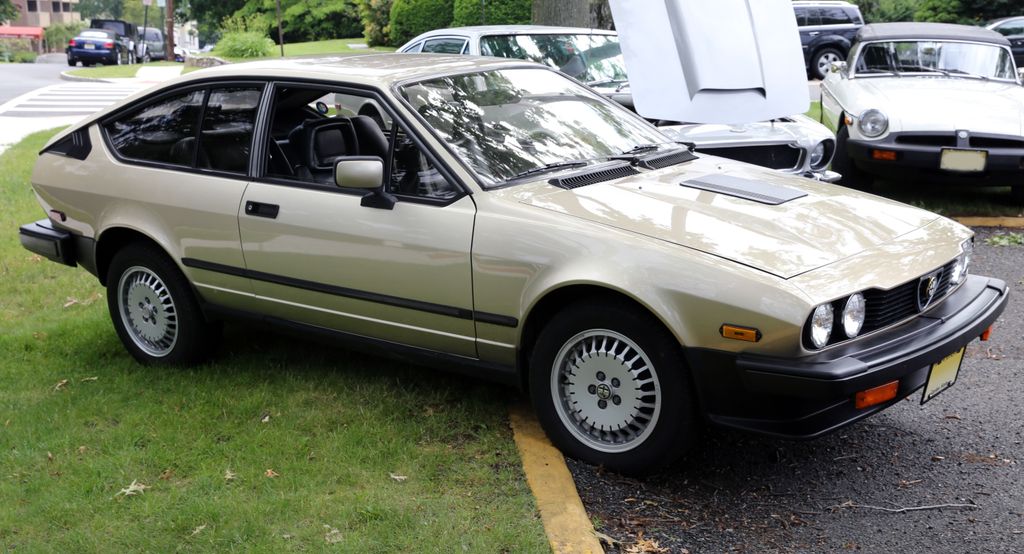
13. **Alfa Romeo GTV6**Stepping into the world of Italian flair and engaging performance, the Alfa Romeo GTV6 is a distinct and captivating choice for collectors seeking something truly unique from the 1980s. Its mechanical layout, featuring a classic front-engine, rear-wheel-drive configuration, provides a balanced and dynamic foundation for an exhilarating ride. At its heart lies the renowned 2.5L V6 engine, famous for its sonorous exhaust note that is music to any enthusiast’s ears.
The GTV6 immediately captures attention with its distinctive wedge-shaped design, a hallmark of 80s automotive aesthetics that still manages to stand out in a crowd. This striking visual appeal is matched by its spirited performance, which collectively offers an engaging driving experience. It’s a car that demands to be driven and rewards its pilot with a visceral connection to the road.
Despite its obvious charms and passionate following, the Alfa Romeo GTV6 remains, for now, a quirky and often underappreciated classic. This translates into accessible prices for those wanting a unique sports car with genuine Italian pedigree and an undeniable sense of occasion. For collectors desiring a classic that offers both character and performance without breaking the bank, the GTV6 is an incredibly smart and emotionally resonant acquisition.
Car Model Information: 2022 RAM 1500 TRX
Name: Alfa Romeo Alfetta
Caption: 1978 Alfa Romeo Alfetta GTV 2.0
Manufacturer: Alfa Romeo
Production: 1972–1987
Assembly: Arese,Rosslyn, Gauteng
BodyStyle: Sedan (automobile)
Layout: Front-engine, rear-wheel-drive layout
Related: Alfa Romeo Giulietta (116),Alfa Romeo Alfa 6,Alfa Romeo 90
Categories: 1980s cars, Alfa Romeo vehicles, Articles with short description, CS1 Dutch-language sources (nl), CS1 French-language sources (fr)
Summary: The Alfa Romeo Alfetta (Type 116) is a front-engine, five-passenger saloon and fastback coupé manufactured and marketed by Italian automaker Alfa Romeo from 1972 to 1987 with a total of over 400,000 units produced during its production run.
The Alfetta was noted for the rear position of its transaxle (clutch and transmission) and its De Dion tube rear suspension — an arrangement designed to optimize handling by balancing front/rear weight distribution, as well as maintaining a low polar moment of inertia and low center of gravity. The interior of Coupé models featured a then unusual central tachometer placement — by itself, directly in front of the driver.
The Alfetta name, which means “little Alfa” in Italian is derived from the nickname of the Alfa Romeo Alfetta (Tipo 159), a successful Formula One car which in its last iteration introduced in 1951, paired a transaxle layout to De Dion tube rear suspension — like its modern namesake.
Get more information about: Alfa Romeo Alfetta
Buying a high-performing used car >>>
Brand: Alfa Romeo Model: GTV6
Price: $75,416 Mileage: 27,561 mi.
Read more about: Remember These? 14 Classic Cars From the 1980s That Everyone Forgot About (But Are Now Worth a Fortune!)
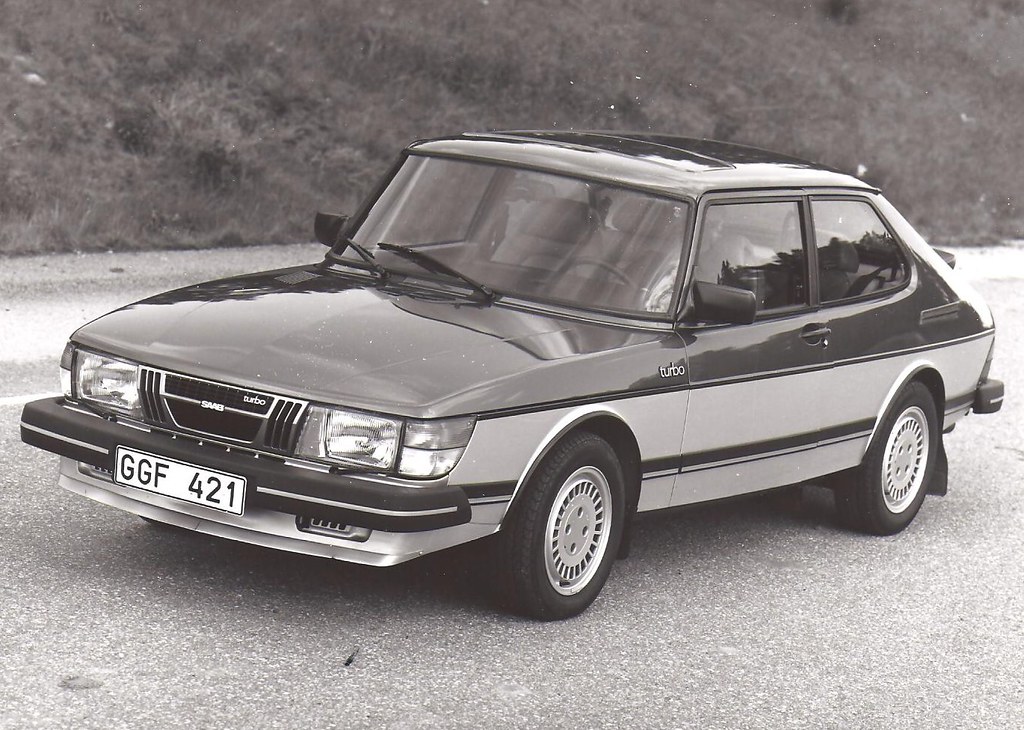
14. **Saab 900 Turbo**The Saab 900 Turbo is a testament to innovative design and Scandinavian quirkiness, standing out as a truly capable classic from the 1980s. Far from the conventional, it offered a unique blend of features that set it apart from its contemporaries, making it a darling among those who appreciate engineering originality and understated performance. Its distinctive silhouette and aircraft-inspired interior remain instantly recognizable.
At its core was a turbocharged engine, providing a thrilling surge of power, channeled through its front-wheel-drive system. This, combined with its unique Scandinavian styling and often avant-garde design elements, made the 900 Turbo a pioneer. The brand’s reputation for durability and pioneering innovative features, like its quirky ignition key placement, further solidified its unique position in the automotive landscape.
Today, the Saab 900 Turbo is recognized as an affordable collector’s car, offering a compelling blend of performance, practicality, and undeniable character. It’s a car that speaks volumes about intelligent design and a commitment to driver experience, making it an excellent investment for those who value individuality and a distinct piece of automotive history that continues to deliver a satisfying and engaging drive.
Read more about: Beyond the Show-Off: 12 Cars That Make People Assume You’re Rich Immediately
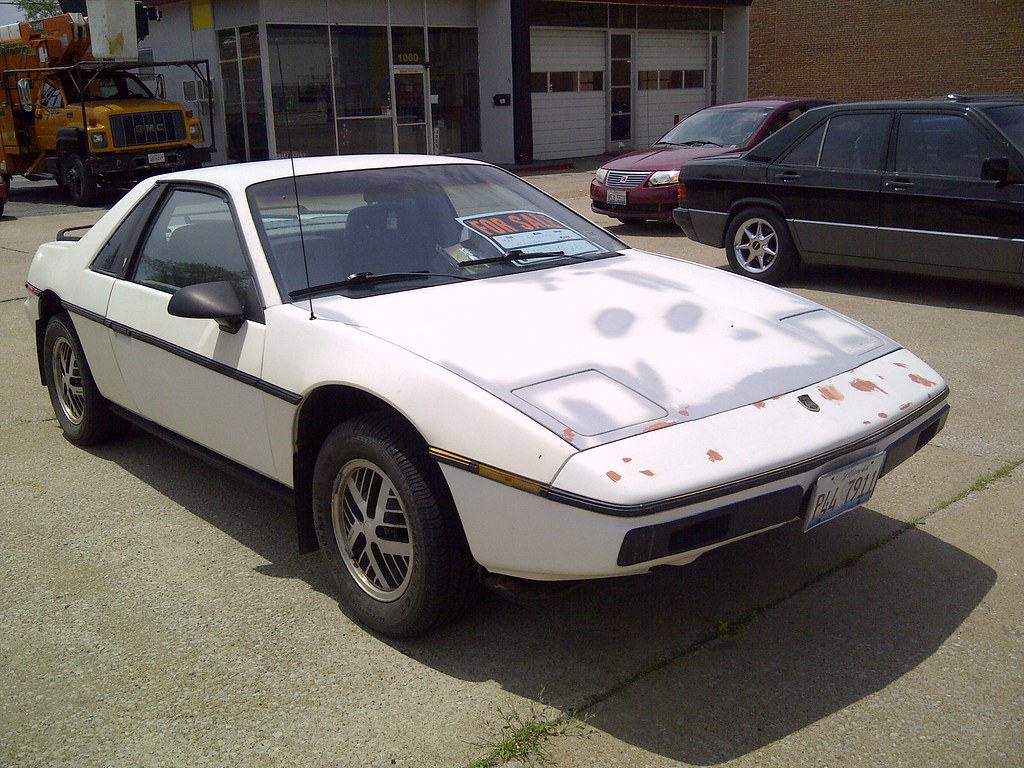
15. **Pontiac Fiero**The Pontiac Fiero stands as General Motors’ ambitious, and ultimately unique, attempt at an affordable mid-engine sports car during the 1980s. This bold venture into a segment typically dominated by more exotic marques created a vehicle that offered a truly distinctive driving experience. Its innovative layout, placing the engine behind the passenger compartment, immediately set it apart from almost everything else on American roads.
While the Fiero garnered attention for its futuristic styling and agile handling, it did face early reliability issues that somewhat marred its initial reputation. However, it’s crucial for collectors to note that later models saw significant improvements in engineering and build quality. These refined versions addressed many of the initial concerns, showcasing the Fiero’s true potential as a capable and engaging sports car.
Now, the Pontiac Fiero represents a fun and genuinely budget-friendly entry into the captivating world of mid-engine sports cars. Its bold, futuristic styling continues to hold a strong appeal, and its unique place in automotive history has cemented its collectible status. For enthusiasts looking for an interesting and rewarding option that offers a unique driving proposition and a growing appreciation, the Fiero is undoubtedly a smart and distinctive choice.
Car Model Information: 1986 Pontiac Fiero
Name: Pontiac Fiero
Caption: 1988 Fiero Formula
Manufacturer: Pontiac (automobile)
Production: August 1983 – August 16, 1988,370,168 produced
ModelYears: 1984 – 1988
Successor: Pontiac Solstice
Assembly: Pontiac, Michigan
Designer: Hulki Aldikacti,George Milidrag
Class: Sports car
BodyStyle: fastback,notchback
Platform: GM P platform
Layout: Rear mid-engine, rear-wheel-drive layout
Engine: {{cvt,151,CID,L,1,disp=flip,Iron Duke engine#LR8,Inline-four engine
Transmission: Turbo-Hydramatic 125,Manual transmission,Getrag 282 transmission,Isuzu
Wheelbase: 2373 mm
Abbr: on
Length: 4072 mm
Width: 1750 mm
Height: 1191 mm
Weight: 1116 to
Categories: All articles with unsourced statements, Articles with short description, Articles with unsourced statements from February 2012, Articles with unsourced statements from July 2024, Articles with unsourced statements from October 2025
Summary: The Pontiac Fiero is a rear mid-engine, light sports car manufactured and marketed by Pontiac for model years 1984 – 1988. Intended as an economical commuter car with modest performance aspirations, it was Pontiac’s first two-seater since their 1926 to 1938 coupes, and the first mass-produced, rear mid-engine car by any American manufacturer.
In addition to using 4- and 6-cylinder engines to help Pontiac meet America’s ‘CAFE’ average fuel economy requirements, the Fiero’s chassis and structure technology used non-load-bearing, composite body-panels, contributing to the car’s light-weight and its unique selling proposition. Pontiac engineers modified the design over its life to enhance its performance and reposition the two-seater closer to the implications of its sporty configuration.
The Fiero 2M4 (two-seat, mid-engine, four-cylinder) placed on Car and Driver magazine’s Ten Best list for 1984, and was the Official Pace Car of the Indianapolis 500 for 1984.
A total of 370,168 Fieros were manufactured over five years’ production, its mild performance, reliability and safety issues becoming points of criticism. The Fiero was discontinued after annual sales fell steadily.
Get more information about: Pontiac Fiero
Buying a high-performing used car >>>
Brand: Pontiac Model: Fiero
Price: $14,999 Mileage: 68,582 mi.
Read more about: 10 Sports Coupes That Were So Shockingly Slow, Even Your Grandma’s Minivan Could Take ‘Em to School
As we conclude our deep dive into these 15 undervalued 1980s sports cars, it’s abundantly clear that the collector car market is far richer and more diverse than mere seven-figure auctions and celebrated supercars. It’s a vibrant landscape where true gems fly under the radar, quietly appreciating in value and character. Owning one of these retro vehicles isn’t just about the drive; it’s about appreciating a tangible piece of history, embracing distinctive style, and making a genuinely smart investment—often, it’s all three wrapped into one exhilarating package. These cars prove that you don’t need exceptionally deep pockets to own a piece of automotive legacy; you just need a keen eye and a passion for the extraordinary.



